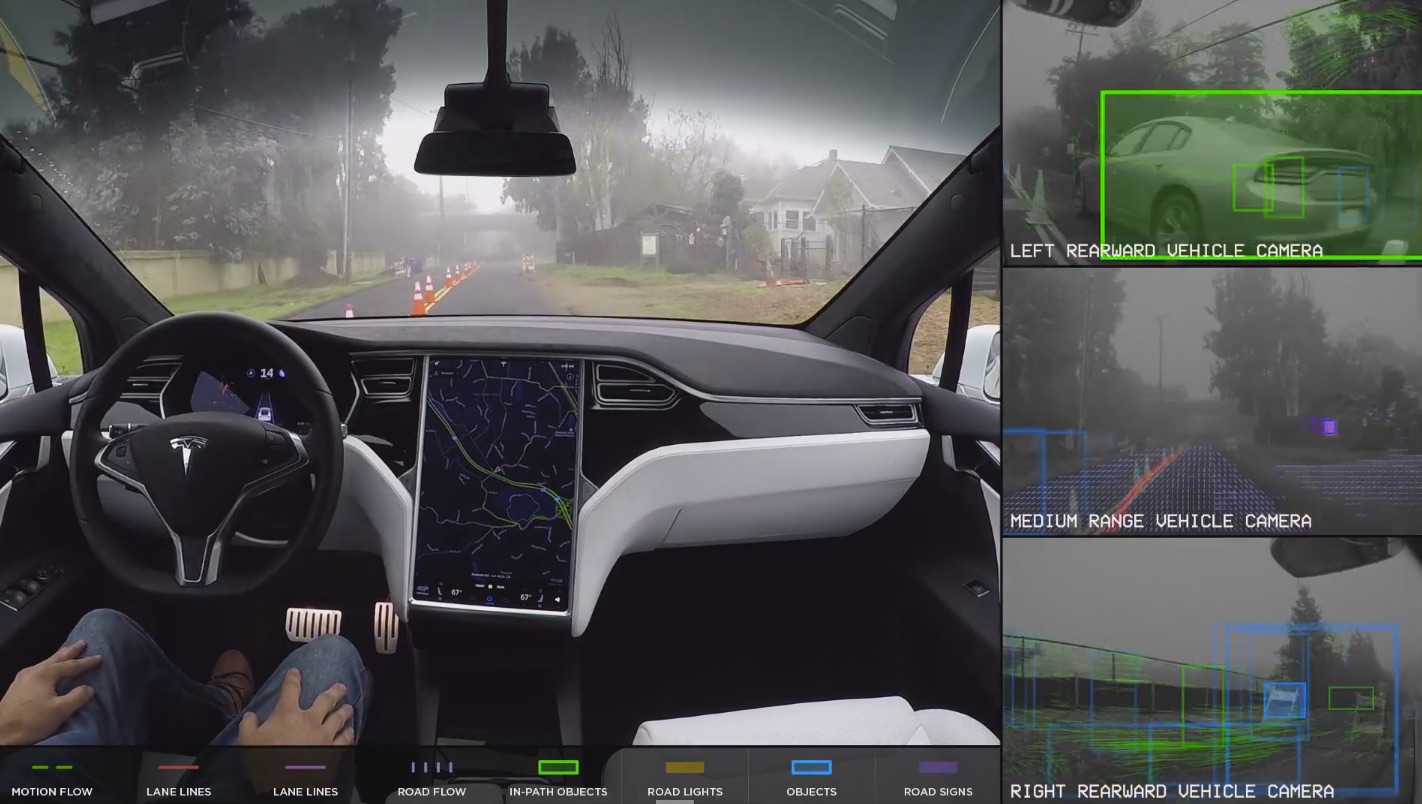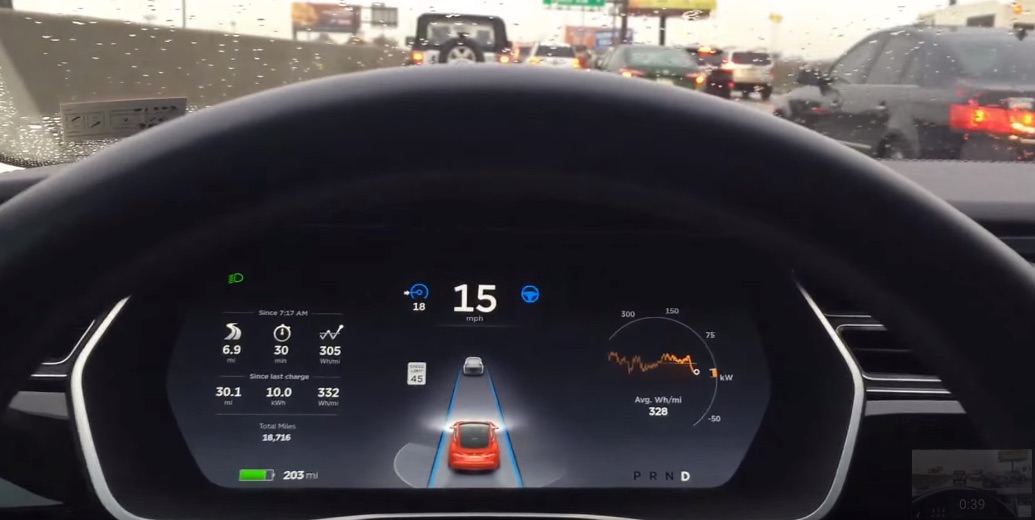

News
Tesla Autopilot and artificial intelligence: The unfair advantage
Serial tech entrepreneur and Tesla CEO Elon Musk has had a longstanding fear of artificial intelligence, but his company’s investments in artificial intelligence have been noted as an attempt to keep track of developments in the field of AI. In an interview for Vanity Fair in April 2017, he outright expressed his concerns with AI and claimed that one of the reasons for the development of SpaceX was that it could be an interplanetary escape route for humanity if artificial intelligence goes rogue. However, even Musk realizes the importance of AI in real-world applications, specifically for self-driving cars. At the end of June, Musk hired Andrej Karpathy as the new Director of Artificial Intelligence at Tesla, and MIT Technology Review claims it is the start of a plan to rethink automated driving at Tesla.
Karpathy comes from OpenAI, a non-profit company founded by Musk that focuses on “discovering and enacting the path to safe artificial general intelligence.” Afterwards, he moved on to intern at DeepMind, a place that spotlighted reinforcement learning with AI. Karpathy’s previous research focuses are on image understanding and recognition, which directly translates into applying proven image recognitions algorithms in Tesla’s Autopilot.
Recently, the popular question of morality was brought up in context to AI learning in Autopilot cars. It’s very interesting to consider how to teach technology to respond to an innately human moral problem. The Moral Machine, hosted by Massachusetts Institute of Technology, is a platform built to “gather human perspectives on moral decisions made by machine intelligence, such as self-driving cars.” It questions how the machine would act in human decisions such as whether to crash the driver or keep driving into a pedestrian that is crossing the street where there are no traffic regulators. How exactly do you teach a logical machine the mechanisms of ethical decision-making?
Although Musk and Tesla are the leaders in the self-driving field, a number of other companies are also entering into the competition sphere. Google, Uber, and Intel’s Mobileye have all been considering the application of reinforcement learning in the context of self-driving cars. Uber, Waymo, GM (Cruise Automation), Mobileye (camera supplier), Mercedes and Velodyne (LiDAR Supplier) could be potential competitors in the realm of self-driving vehicles. However, most of the technology does not encompass full self-driving, which is Musk’s aim. While other companies are investing heavily in autonomous fleets, Tesla far outpaces them in terms of data collection and release of finished product.
What are the differentiators for Tesla in the growing field of AI directed driverless cars?
Historically, Musk has focused on “narrow AI” which can enable the car to make decisions without driver interference. The vehicles would increasingly rely on radar as well as ultrasonic technology for sensing and data-gathering to form the basis for Tesla’s Autopilot algorithms. A technology that isn’t derived from LiDAR, the combination of radar and camera system said to outperform LiDAR especially in adverse weather conditions such as fog.
With the introduction of Autopilot 2.0 and Tesla’s “Vision” system, and billions of miles real-world driving data collected by Model S and Model X drivers, Tesla continues to create a detailed 3D map of the world that has increasingly finer resolution as more vehicles are purchased, delivered and placed onto roadways. The addition of GPS allows Tesla to put together a visual driving map for AI vehicles to follow, paving the path for newer and more advanced vehicles.
The addition of Karpathy will be a notable asset for Tesla’s Autopilot team. In specific, the team will be able to apply Karpathy’s deep knowledge of reinforcement learning systems. Reinforcement learning for AI is similar to teaching animals via repetition of a behavior until a positive outcome is yielded. This type of machine learning will allow Tesla Autopilot to navigate complex and challenging scenarios. For example, AI will allow cars to determine in real-time how to navigate a four-way stop, a busy intersection or other difficult situations present on city streets. By making cars smarter with the way they navigate drivers, Tesla will put itself ahead of the curve with a fully-thinking, fully self-driving car.
Tesla is expected to demonstrate a fully autonomous cross-country drive from California to New York by the end of this year as a showcase for its upcoming Full Self-driving Capability. If you’re buying a Tesla Model 3, or an existing Model S or Model X owner, just know that you’re contributing to a self-driving future, mile by mile.

Elon Musk
SpaceX’s Starship FL launch site will witness scenes once reserved for sci-fi films
A Starship that launches from the Florida site could touch down on the same site years later.
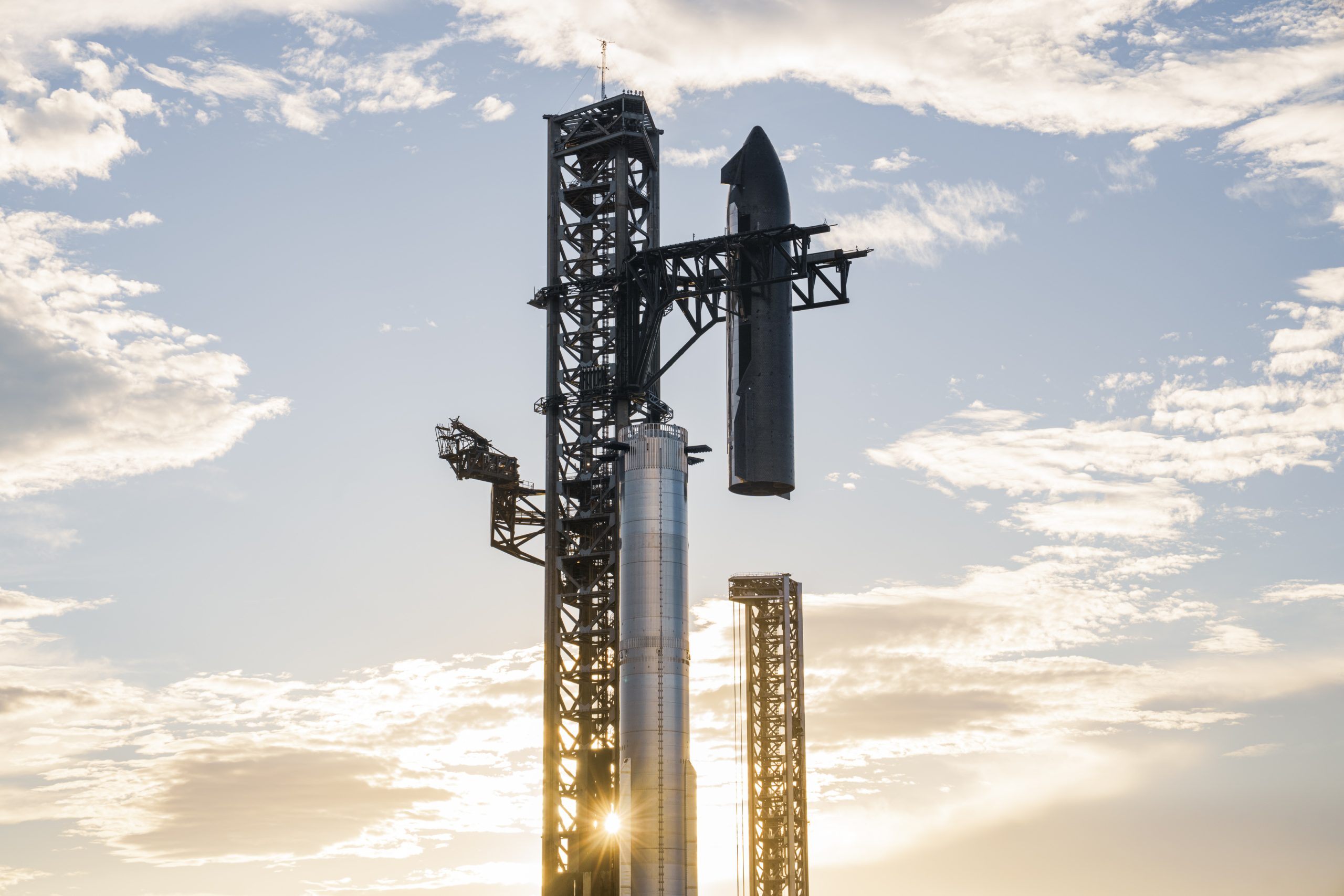
The Department of the Air Force (DAF) has released its Final Environmental Impact Statement for SpaceX’s efforts to launch and land Starship and its Super Heavy booster at Cape Canaveral Space Force Station’s SLC-37.
According to the Impact Statement, Starship could launch up to 76 times per year on the site, with Super Heavy boosters returning within minutes of liftoff and Starship upper stages landing back on the same pad in a timeframe that was once only possible in sci-fi movies.
Booster in Minutes, Ship in (possibly) years
The EIS explicitly referenced a never-before-seen operational concept: Super Heavy boosters will launch, reach orbit, and be caught by the tower chopsticks roughly seven minutes after liftoff. Meanwhile, the Starship upper stage will complete its mission, whether a short orbital test, lunar landing, or a multi-year Mars cargo run, and return to the exact same SLC-37 pad upon mission completion.
“The Super Heavy booster landings would occur within a few minutes of launch, while the Starship landings would occur upon completion of the Starship missions, which could last hours or years,” the EIS read.
This means a Starship that departs the Florida site in, say, 2027, could touch down on the same site in 2030 or later, right beside a brand-new stack preparing for its own journey, as noted in a Talk Of Titusville report. The 214-page document treats these multi-year round trips as standard procedure, effectively turning the location into one of the world’s first true interplanetary spaceports.
Noise and emissions flagged but deemed manageable
While the project received a clean bill of health overall, the EIS identified two areas requiring ongoing mitigation. Sonic booms from Super Heavy booster and Starship returns will cause significant community annoyance” particularly during nighttime operations, though structural damage is not expected. Nitrogen oxide emissions during launches will also exceed federal de minimis thresholds, prompting an adaptive management plan with real-time monitoring.
Other impacts, such as traffic, wildlife (including southeastern beach mouse and Florida scrub-jay), wetlands, and historic sites, were deemed manageable under existing permits and mitigation strategies. The Air Force is expected to issue its Record of Decision within weeks, followed by FAA concurrence, setting the stage for rapid redevelopment of the former site into a dual-tower Starship complex.
SpaceX Starship Environmental Impact Statement by Simon Alvarez
News
Tesla Full Self-Driving (FSD) testing gains major ground in Spain
Based on information posted by the Dirección General de Tráfico (DGT), it appears that Tesla is already busy testing FSD in the country.
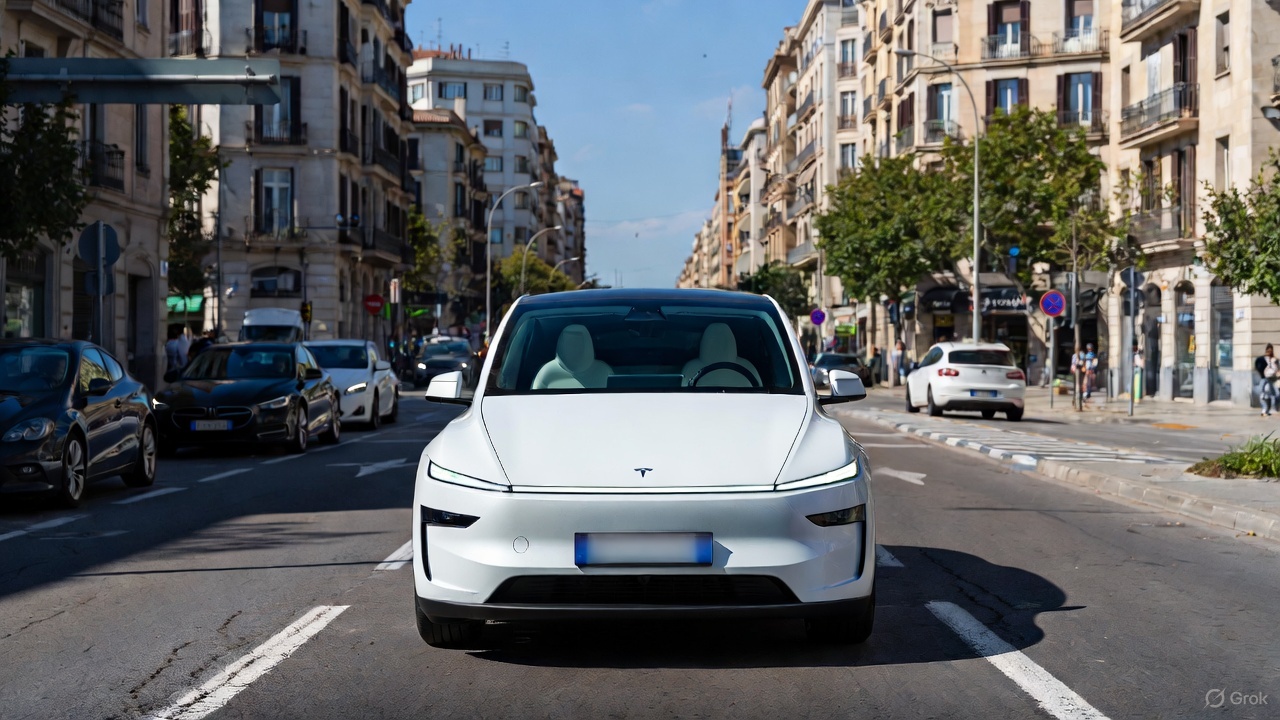
Tesla’s Full Self-Driving (Supervised) program is accelerating across Europe, with Spain emerging as a key testing hub under the country’s new ES-AV framework program.
Based on information posted by the Dirección General de Tráfico (DGT), it appears that Tesla is already busy testing FSD in the country.
Spain’s ES-AV framework
Spain’s DGT launched the ES-AV Program in July 2025 to standardize testing for automated vehicles from prototypes to pre-homologation stages. The DGT described the purpose of the program on its official website.
“The program is designed to complement and enhance oversight, regulation, research, and transparency efforts, as well as to support innovation and advancements in automotive technology and industry. This framework also aims to capitalize on the opportunity to position Spain as a pioneer and leader in automated vehicle technology, seeking to provide solutions that help overcome or alleviate certain shortcomings or negative externalities of the current transportation system,” the DGT wrote.
The program identifies three testing phases based on technological maturity and the scope of a company’s operations. Each phase has a set of minimum eligibility requirements, and applicants must indicate which phase they wish to participate in, at least based on their specific technological development.
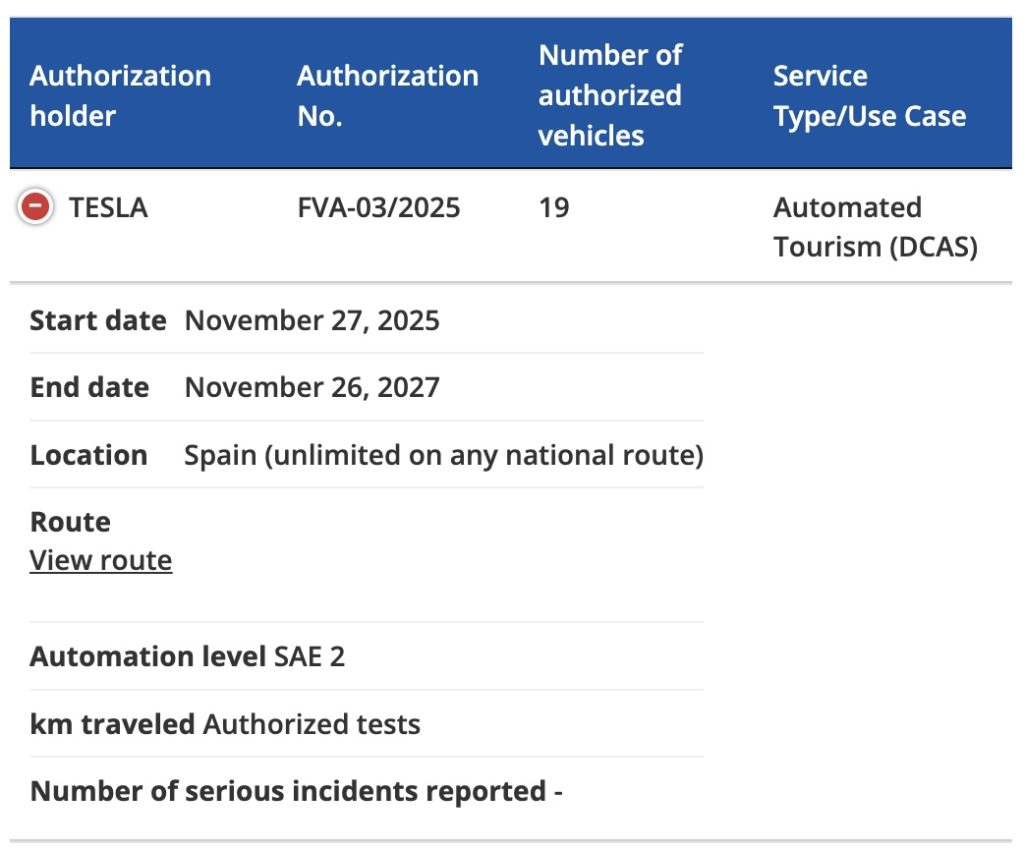
Tesla FSD tests
As noted by Tesla watcher Kees Roelandschap on X, the DGT’s new framework effectively gives the green flight for nationwide FSD testing. So far, Tesla Spain has a total of 19 vehicles authorized to test FSD on the country’s roads, though it would not be surprising if this fleet grows in the coming months.
The start date for the program is listed at November 27, 2025 to November 26, 2027. The DGT also noted that unlimited FSD tests could be done across Spain on any national route. And since Tesla is already in Phase 3 of the ES-AV Program, onboard safety operators are optional. Remote monitoring would also be allowed.
Tesla’s FSD tests in Spain could help the company gain a lot of real-world data on the country’s roads. Considering the scope of tests that are allowed for the electric vehicle maker, it seems like Spain would be one of the European countries that would be friendly to FSD’s operations. So far, Tesla’s FSD push in Europe is notable, with the company holding FSD demonstrations in Germany, France, and Italy. Tesla is also pushing for national approval in the Netherlands in early 2026.
News
Tesla FSD V14.2.1 is earning rave reviews from users in diverse conditions
Tesla’s Full Self-Driving (Supervised) software continues its rapid evolution, with the latest V14.2.1 update drawing widespread praise.
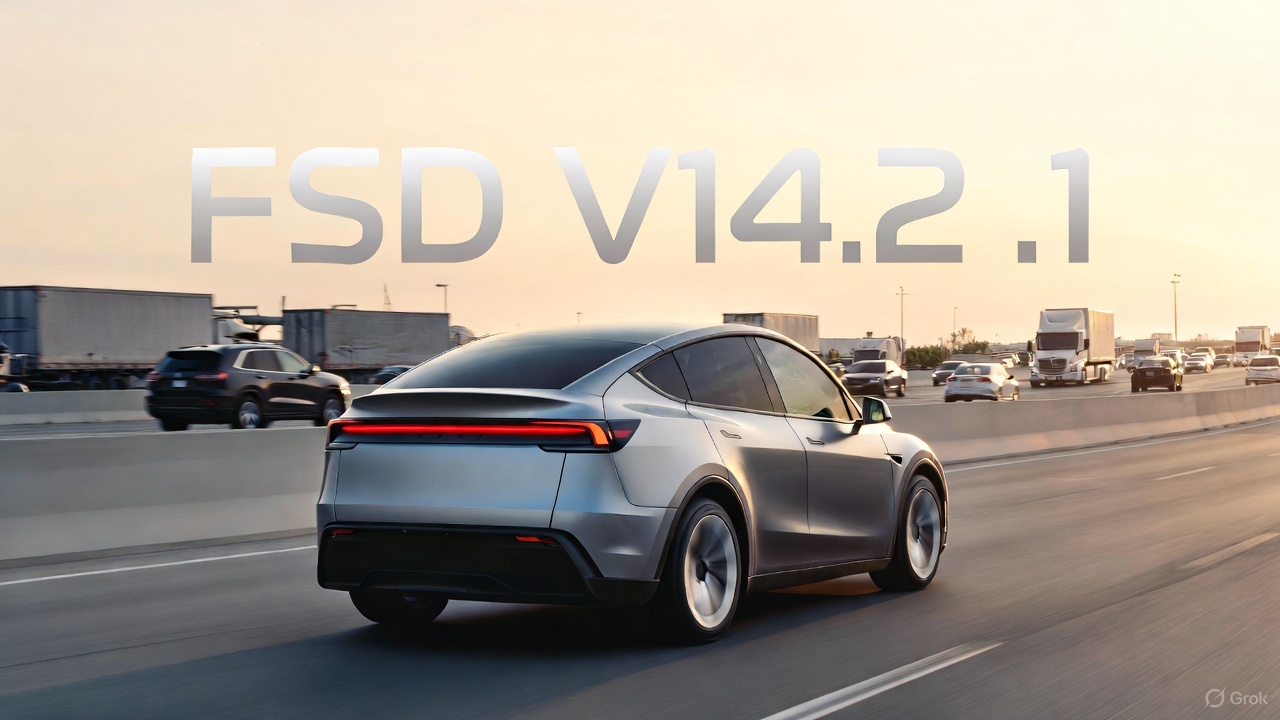
Tesla’s Full Self-Driving (Supervised) software continues its rapid evolution, with the latest V14.2.1 update drawing widespread praise for its smoother performance and smarter decision-making.
Videos and firsthand accounts from Tesla owners highlight V14.2.1 as an update that improves navigation responsiveness, sign recognition, and overall fluidity, among other things. Some drivers have even described it as “more alive than ever,” hinting at the system eventually feeling “sentient,” as Elon Musk has predicted.
FSD V14.2.1 first impressions
Early adopters are buzzing about how V14.2.1 feels less intrusive while staying vigilant. In a post shared on X, Tesla owner @LactoseLunatic described the update as a “huge leap forward,” adding that the system remains “incredibly assertive but still safe.”
Another Tesla driver, Devin Olsenn, who logged ~600 km on V14.2.1, reported no safety disengagements, with the car feeling “more alive than ever.” The Tesla owner noted that his wife now defaults to using FSD V14, as the system is already very smooth and refined.
Adverse weather and regulatory zones are testing grounds where V14.2.1 shines, at least according to testers in snow areas. Tesla watcher Sawyer Merritt shared a video of his first snowy drive on unplowed rural roads in New Hampshire, where FSD did great and erred on the side of caution. As per Merritt, FSD V14.2.1 was “extra cautious” but it performed well overall.
Sign recognition and freeway prowess
Sign recognition also seemed to show improvements with FSD V14.2.1. Longtime FSD tester Chuck Cook highlighted a clip from his upcoming first-impressions video, showcasing improved school zone behavior. “I think it read the signs better,” he observed, though in standard mode, it didn’t fully drop to 15 mph within the short timeframe. This nuance points to V14.2.1’s growing awareness of temporal rules, a step toward fewer false positives in dynamic environments.
FSD V14.2.1 also seems to excel in high-stress highway scenarios. Fellow FSD tester @BLKMDL3 posted a video of FSD V14.2.1 managing a multi-lane freeway closure due to a police chase-related accident. “Perfectly handles all lanes of the freeway merging into one,” the Tesla owner noted in his post on X.
FSD V14.2.1 was released on Thanksgiving, much to the pleasant surprise of Tesla owners. The update’s release notes are almost identical to the system’s previous iteration, save for one line item read, “Camera visibility can lead to increased attention monitoring sensitivity.”


